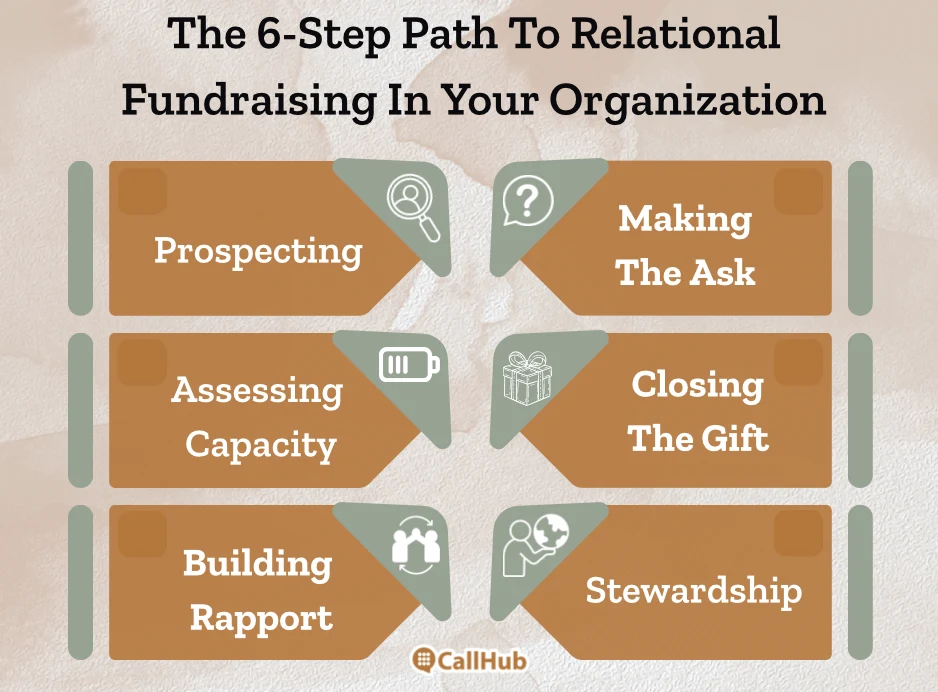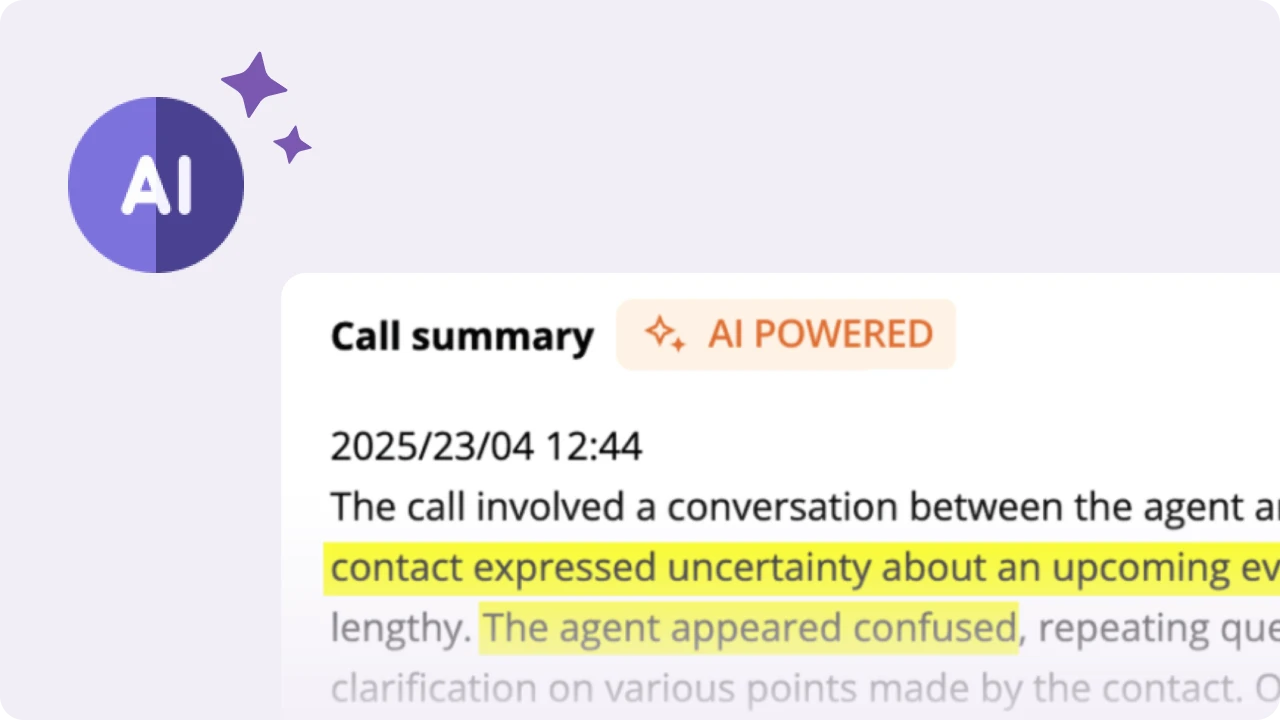Table of Contents
One of the most powerful fundraising strategies doesn’t need a big budget or cutting-edge tech, just a little heart, i.e., relational fundraising.
Take Charity: Water, for instance. They transformed birthdays into fundraising moments. Instead of gifts, people asked their loved ones to donate to clean water projects. The result? Over 190,000 birthday campaigns and $50 million raised. That’s the magic of relational fundraising.
Why does this matter now more than ever?
Let’s break this down in a simple way:
- Charitable giving in the U.S. reached a record of $592.5 billion,
- But donor retention? Just 42.9%,
- and only 19.4% of first-time donors gave again.
What does this tell us? People are giving, but they are not staying.
The solution? Real human connection. Relationships that go beyond the transaction. Think more meaningful conversations, fewer scripted pitches.
So, what is relational fundraising?
Relational fundraising is a donor-first fundraising strategy.
It puts trust, connection, and long-term engagement front and center. It’s not just about securing a donation—it’s about building a relationship that endures beyond the first gift.
It leverages personal networks—volunteers, donors, and their circles—to inspire action by making every interaction meaningful.
It shifts the focus from “How do we get this gift?” to “How do we deepen this relationship?”
Why nonprofits can’t ignore relational fundraising

Here’s why adopting a relationship-based model is no longer optional: it’s essential.
1. Declining new donor acquisition
New donor retention declined by 5.9% year-over-year, with only one in five new potential donors from 2023 giving again in 2024. This means that 80% of the new donors are not returning, making long-term sustainability increasingly difficult for nonprofits.
Read more: How to manage your donor data for meaningful donor relationships.
2. High churn = High costs
It costs 5x more to acquire a new and potential donor than to retain an existing one. Constantly replacing churned donors is not only costly, it’s unsustainable.
3. Lifetime value over one-time gifts
A loyal donor’s lifetime value (LTV) is far higher than that of a single gift donor. With relationship fundraising, you’re not just maximizing revenue; you’re building mission-aligned partnerships that drive long-term success.
Relational fundraising vs. transactional fundraising
To better understand this shift, let’s compare the two models side by side:
| Features | Relational Fundraising | Transactional Fundraising |
| Donor view | Partner/investor | ATM/one-time giver |
| Focus | Relationship-building, trust. | Immediate financial gain. |
| Communication style | Personalized, two-way, emotionally driven. | Generic, one-way appeals. |
| Key metric | Retention/ lifetime value. | Dollars raised per campaign. |
The 6-step path to relational fundraising

Here’s a practical 6-step roadmap to bring relationship fundraising into your nonprofit’s day-to-day operations—a clear roadmap for building genuine, long-term donor relationships that grow over time.
1. Prospecting
Start by identifying who’s already in your ecosystem. Look beyond recent donors. Think volunteers, event attendees, email subscribers, and even lapsed donors. They’ve already shown interest in your mission and could be your next strong supporters. Ensure no one falls through the cracks.
Read more: How to begin effective donor prospect research
2. Assessing capacity
Not all donors have the same ability to give. Evaluate their giving history, engagement level, and indicators such as past event attendance or involvement. Understanding capacity helps you tailor your outreach appropriately, without overestimating or underestimating someone’s potential impact.
3. Building rapport
Trust is built through consistent human interaction. Whether it’s through personal calls, coffee meetups, handwritten notes, or small group gatherings, the goal is to connect authentically. These moments lay the groundwork for deeper engagement and commitment.
4. Making the ask
When the time is right, make the ask confidently. Three principles make a reasonable ask:
- Clear: Don’t be vague. Say precisely what you need.
- Direct: Ask boldly.
- Specific: Tie to something meaningful.
Read more: How to get the most out of virtual fundraising asks.
5. Closing the gift
Once they’re ready to give, guide them through the process. Discuss how they’d like to contribute, the amount, and the timing. Ensure it feels collaborative rather than transactional.
6. Acknowledgement & stewardship
Saying thank you is just the beginning. Show donors the ongoing impact of their support through thoughtful follow-ups, impact stories, updates, and testimonials.
Always be transparent about how their gift is used. Ethical stewardship builds trust and long-term loyalty. Help them see the return on their investment in your mission and stay connected for the following conversation, not just the next ask.
Read more: Unveiling Friendraising Best Practices and Controversies.
| Pro tip: Use Relational Organizing tools |
|---|
| CallHub’s Relational Organizing platform is designed to help mobilize supporters by leveraging the personal networks of the campaign’s volunteers. Volunteers reach out directly to their friends and family using this tool, adding a personal touch to campaign outreach – the ultimate goal of relationship fundraising. |
- Watch our quick YouTube guide on onboarding relational agents.

| What is the relationship fundraising model? It’s a donor-first approach that prioritizes long-term engagement over one-time asks, focusing on building trust and connection. |
| What are the different types of fundraising? Major gift fundraisingAnnual givingPlanned givingPeer-to-peerDigital givingRelational fundraising. |
| What are the 3 Cs of fundraising? • Connection (build relationships) • Communication (authentic outreach) • Commitment (follow-up and stewardship) is the foundation of relational fundraising. |
| What is a relationship strategy in nonprofits? A structured plan to nurture each donor journey, mapping touchpoints, personalizing engagement, and measuring satisfaction over time. |
| What are the most effective fundraising methods today? Relational fundraising, peer-to-peer campaigns, and donor stewardship continue to be among the top strategies with high ROI. |
Relational fundraising in the future
Relational fundraising isn’t fluffy; it’s the future. It drives:
- More donor
- Better retention
- Higher giving frequency
- Stronger revenue
The organizations that thrive are the ones that treat supporters like partners, not ATMs.
Ready to start? Explore how CalHub’s suite of tools can help lasting donor relationships today.
P.S. If you made it this far, you’re officially relationship material. Let’s build something meaningful.


